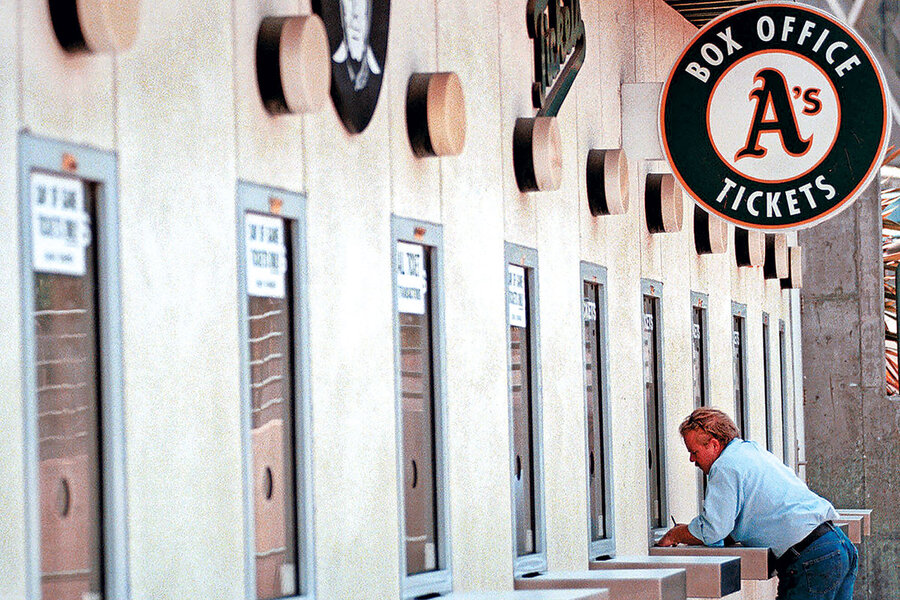ClassPass, MoviePass – now Ballpark Pass
Loading...
Until recently, baseball has been a sport played without clocks. And now, for fans of teams like the Oakland Athletics, America’s pastime can be enjoyed without individual game tickets.
Various Major League Baseball teams, including the St. Louis Cardinals, the Milwaukee Brewers, and the Miami Marlins, have been experimenting with Ballpark Pass, a subscription model that allows fans to attend all regular home games for a monthly fee. The seats that subscribers get depend on the team: Under some arrangements, subscribers who decide to attend that night find out soon before the game where they’ll be sitting, and in others, pass holders have access to standing room areas only. Washington Nationals’ Natspass holders get access to family activities, among other perks.
The Athletics first experimented with Ballpark Pass in July 2015 by offering all of that month’s 13 home games for $89. This year, the American League team built The Treehouse space for its Treehouse Pass holders.
“The Treehouse is a refinement of the Ballpark Pass,” explains Dave Kaval, president of the Oakland Athletics. “We started last year with just the general Ballpark Pass, and we had a ton of people opt into that. But we actually saw the usage pretty low. And some of our season ticket holders were saying it almost wasn’t fair, because they were getting in at such a low price point.”
For either about $30 a month or $120 for the 2018 season, those with a Treehouse Pass have access to the newly built club above the left field bleachers, which includes two sports bars, televisions, concession stands, and standing room areas with drink rails as well as lounge seating. Anyone with a game ticket has access to The Treehouse. Pass holders can purchase upgrades to go elsewhere in the stadium (and the Treehouse Pass includes access to a certain area of general admission seating).
“People don’t plan the way we used to, especially in this smartphone culture,” Mr. Kaval points out. Fans who get off work on time or out of the gym early can use the Treehouse Pass to catch a weeknight game spontaneously or go to the ballpark for a few innings before another event. Knowing that the monthly cost is only marginally more than a single bleacher or upper deck ticket (a bleacher seat for a May game was around $20) allows some fans to take a more casual approach to attending games, he says.
“The Athletics’ business model is that they’ll make money once you get to the ballpark, where they’ll sell you food, drinks, and paraphernalia,” William Pearce, assistant dean of the Haas School of Business at the University of California, Berkeley, says of the plan. “So getting more people in the door, even for a marginal revenue, can have a significant return.”
Kaval says he believes the important point is baseball game attendees being able to make a quick decision about going. “It’s an interesting way to attract new people and create a lot of excitement around a new product at the ballpark,” he says of the program. “If you’ve got some free time that day or week, you can be spontaneous. And I think that’s one of the key things.”
From Netflix and Spotify for unlimited home video and music consumption to MoviePass, ClassPass, and various meal preparation services for cinema, fitness classes, and dining, subscription and membership culture has expanded thanks to consumer technology. “There’s always been subscription models out there,” Mr. Pearce notes. “We always had ‘subscription’ plans for our cellphones and, before that, for magazines. It just wasn’t for as many or as varied industries.”
Kaval says experimenting with how people attend ball games is worthwhile. “Maybe not everything is going to pan out, but you have to be willing to take those risks and try new things,” he says. “And a lot of times, you have a gem of an idea there.”





